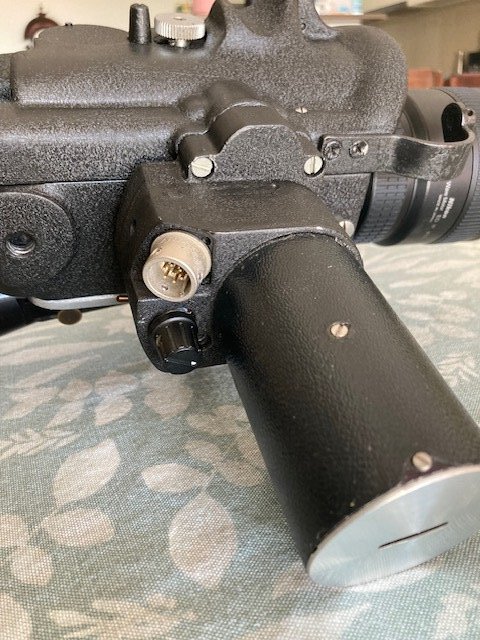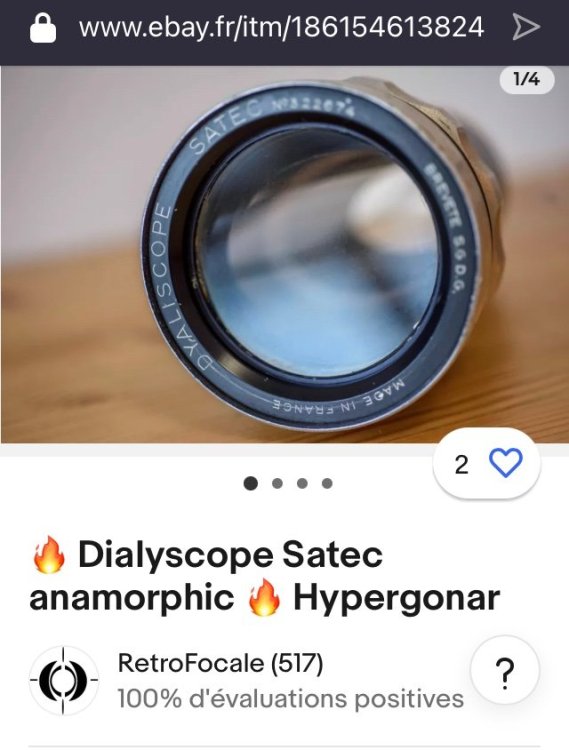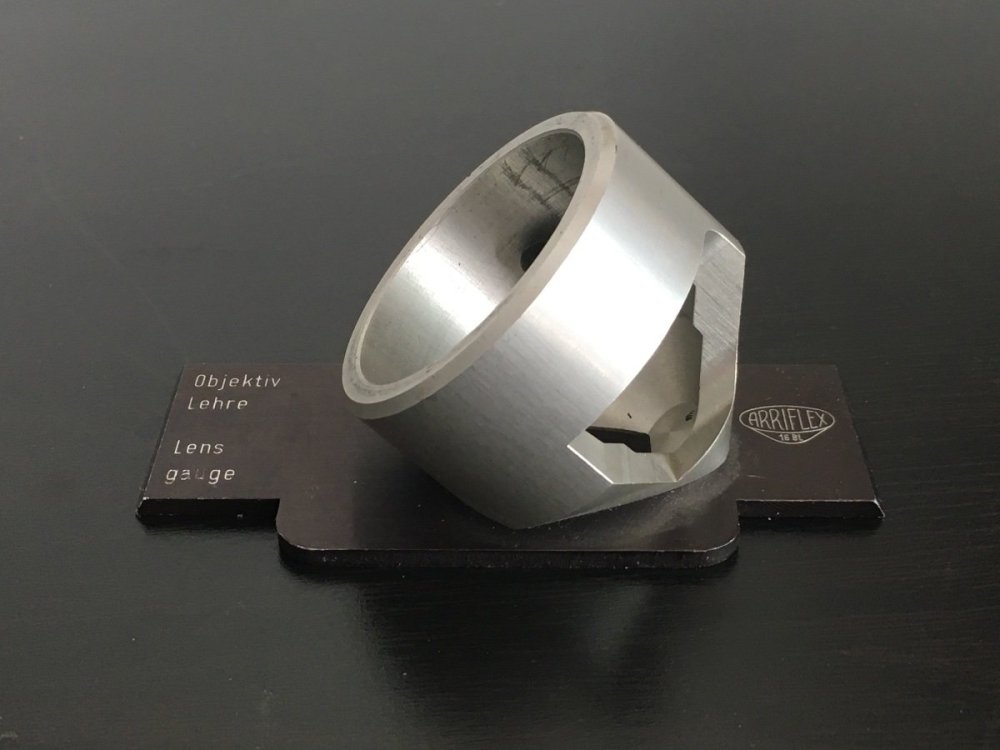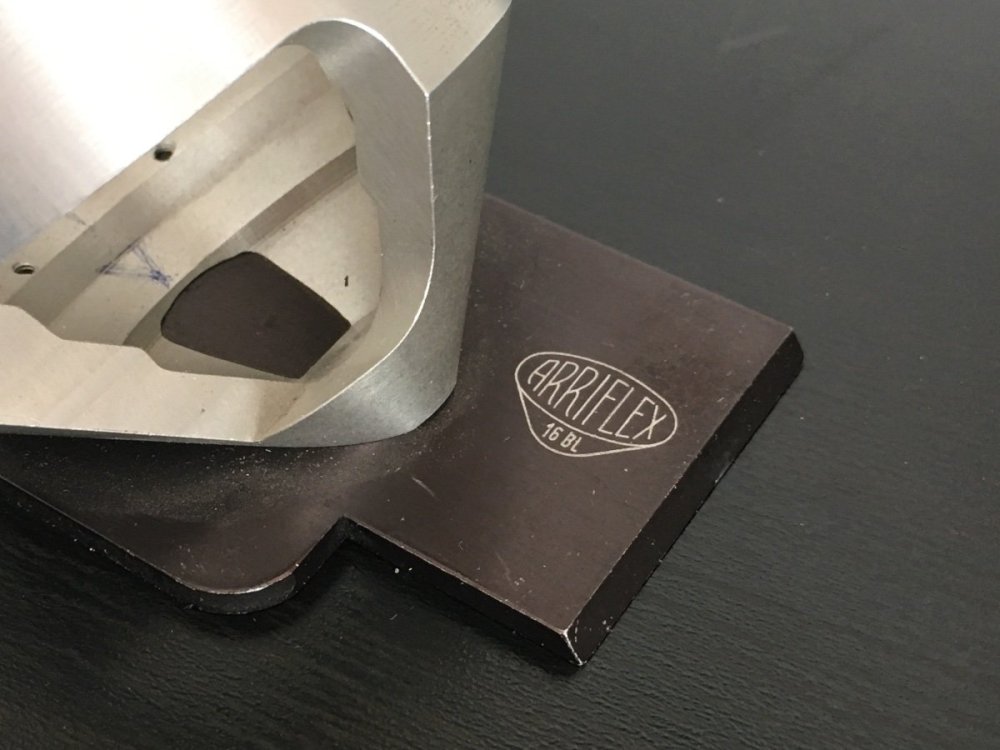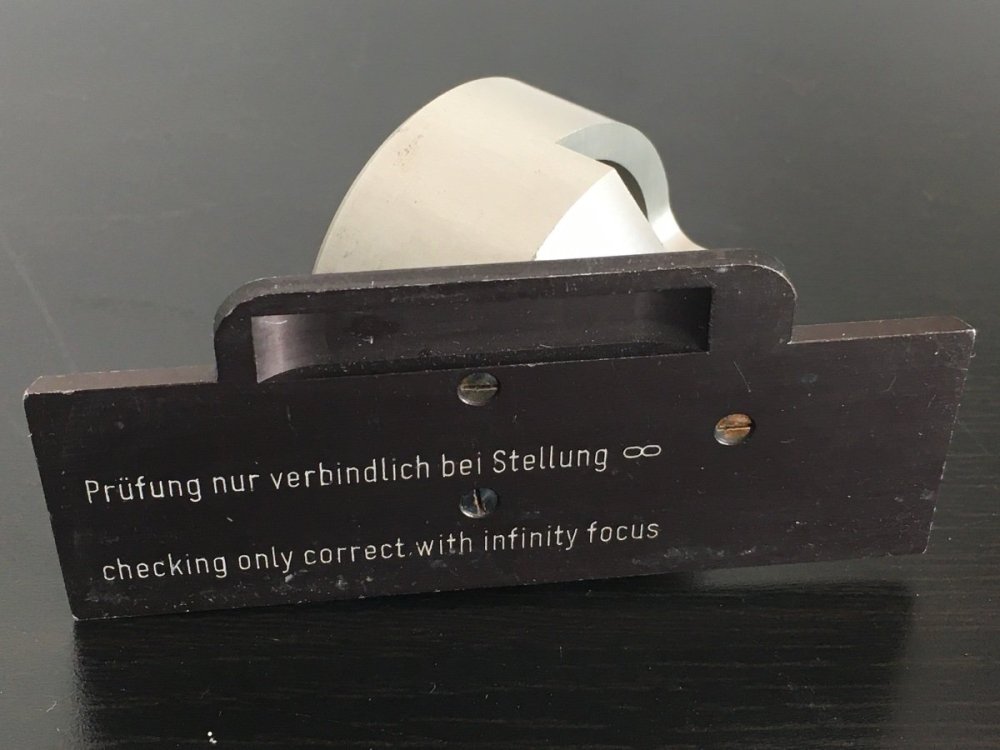All Activity
- Today
-
Cinetape - how to use one.....
Edith blazek replied to Stephen Perera's topic in Camera Assistant / DIT & Gear
Sorry, didn't see you replied to the other post -
That’s great news Simon! I will definitely be interested in this, if the price is reasonable.
-
If I may take up this old thread in order to correct myself, let everybody announce me that there are new springs available for the latest series of Paillard-Bolex H-16 cameras, those with the limit gears not on the spring barrel. I have installed the first fresh drive spring with a serviced H-16 RX-5 this week. The camera runs now like with an original spring in good shape. Service technicians interested in acquiring springs and mounting sleeves are invited to contact me. I have enough in stock and can reorder any time. Springs for H-8 models are also feasible. This is not for everybody. It takes some infrastructure to deal with spiral springs as well as some knowledge and dexterity. Also, all parts of the spring barrel must be checked. If something not healthy, it needs to be repaired or replaced. It’s a joy to be able to give H cameras a new life. The springs are guaranteed for two years.
-
You have unidirectional pressure between gears. One tooth flank rolls over the other. That calls for the thinner lubricant the faster it goes. From the first gear on the spring barrel to the next you use grease. The fastest moving parts of claw and shutter will be oiled. What’s important with lubrication is that the oily parts can flow after the surfaces that rub. Shafts in plain bearings are under directionally changing forces, therefore greased. They can vibrate, if dry. Oil alone runs away. Correct alignment of the elements is self-explanatory. Film transport must take place while a shutter wing covers the aperture. On halt of the mechanism, spring giving energy, the aperture should be covered. Within limits you can adjust when the cycle begins. Try to set to aperture just shut so that the governor has the longest possible time to speed up on release.
- Yesterday
-
I made a big mistake and forgot to mark all gear positions before disassembling. So now I'm struggling to figure out how to align the shutter and the claw properly. I suspect that in the stopped position the claw must be positioned in the exact centre of the slot. With the claw positioned like this the shutter blade can't be perfectly centred relative to the frame. I looked at some photos I was able to find and found the the blade on many of them is positioned slightly to the right with it's center pointing to the frame's edge. Can someone confirm my findings? Also what kind of lubricant would you suggest for the governor axle bearings? At least a grease or an oil? All other bearings seem to be greased.
-
Trevor Komori started following Buying & Selling on Marketplace Sercies ie: Paypal
-
Hey Everyone, Wondering what services people use to buy and sell gear from places like the marketplace on here or on Facebook? I'm looking to do both, and notice some listings will ship at buyer's expense. Do you use paypal or interac transfer to send / receive money? I know the risks, but wondering what alternatives people have are used to purchase or sell gear? Thanks in advance!
-
μεταμορφώσεις
Jeff Bernstein replied to Jeff Bernstein's topic in Students, New Filmmakers, Film Schools and Programs
John Marston, Antonio’s Revenge [ Act 1. Scene 1 ] Enter Piero, unbraced, his arms bare, smeared in blood, a poniard in one hand bloody, and a torch in the other; Strotzo following him with a cord. Piero. Ho, Gasper Strotzo, bind Feliche’s trunk Unto the panting side of Mellida! [ Exit Strotzo ] ’Tis yet dead night, and all the earth is clutch’d In the dull leaden hand of snoring sleep. No breath disturbs the quiet of the air; No spirit moves upon the breast of earth, Save howling dogs, night-crows, and screeching owls, Save meagre ghosts, Piero, and black thoughts. [ Clock strikes ] One, two! Lord! In two hours what a topless mount Of unpeer’d mischief have these hands cast up! [ Re-enter Strotzo ] I can scarce coop triumphing vengeance up From bursting forth in braggart passion! Strotzo. My lord, ’tis firmly said that. * Yet again, a masterpiece of a narrative—“An astonishingly adroit amalgamation of the dead-serious and the comic interfused one with another.” This is comedy horror recalling, say, The Evil Dead (1981); and begins with the abrupt lunacy of Goodfellas. * [ Act 1. Scene 1 ] Enter Piero [ Duke of Venice ], unbraced, his arms bare, smeared in blood, a poniard [ dagger ] in one hand bloody, and a torch in the other; Strotzo [ his servant ] following him with a cord. The most striking opening in Shakespearean-era stagecraft? Piero, Duke of Venice, is a wild sight, a terror stepped out of a nightmare. His finery is unfastened and hanging loose (“unbraced”)—evidence of energetic exertion. That blood stains his body augurs nothing good, nor does the dagger in his hand. The play opens as dark as a nightmare : Piero requires a torch to see his way. Piero. Ho, Gasper Strotzo, bind Feliche’s trunk Unto the panting side of Mellida! [ Exit Strotzo ] In the play’s first line Piero orders his servant to tie the dead body (“trunk”) of a gentleman to a distressed young woman, Mellida. A serious request? A grave request? A Gothic horror Situation, surely. But what follows is comic dialogue that sounds like elevated Shakespearean-speak—but it isn’t; or rather, it’s more than that. What is said is burlesque parody of such convention : ’Tis yet dead night, and all the earth is clutch’d In the dull leaden hand of snoring sleep. No breath disturbs the quiet of the air; The piling up of Elizabethan-theatre clichés transmits clearly to us the humour engineered into the Situation. Questionable is the tautology of “dull leaden”; it is silly repetition from a speaker improvising an attempt at something poetic. Worse is the comic “snoring sleep”—silly-solemn humour engineered by storyteller Marston, and no mistake (if you hear it). “snoring sleep” might be a mock-poetic phrase lifted from, say, The Brand New Monty Python Bok (1973). (Scrooby factoid : The word “snore”, for whatever reason, call it a not-very-poetic word, occurs rarely in Shakespearean-era theatre, though the word has been around since ca. 1330.) Note the powerful contradiction in Piero hitting a noble note rhetorically while drenched in blood (cf. Macbeth, 2.2.48–52). Also note the contradiction “No breath disturbs the quiet of the air”—Oh no, Piero? You’re generating heavy disturbance. “No breath disturbs the quiet of the air.” The play is attuning the audience to the Situation of breathless horror. The line is a behavioural cue for the audience; it seeks (along with the whole stage experience) to rivet the audience to a proverbial “pin-drop” fascination. It is also a comic hope encoded into the script : hopefully, says storyteller Marston with a smile, the audience will be riveted to this! No spirit moves upon the breast of earth, Save howling dogs, night-crows, and screeching owls, Save meagre ghosts, Piero, and black thoughts. The parody of the elevated note continues, and intensifies. Oh how Piero lays it on thick! Not only dogs are sounding out, but also night-crows [ night-jars? ] and owls. One sound would have been enough for any playwright (cf. Macbeth, 2.2.5). Moreover, “spirits moving” and “meagre [ pale ] ghosts” are theatre clichés. Piero’s piling-up of elements is a parody montage of creepy components. COLOSSAL POINT : As you and I note the humour of all this, please keep in mind that the physical atmosphere generated by the play may be received by the audience as totally serious—after all, a sensible person’s first reaction to a bloody situation is “fear and loathing”. Dr. Branom. When we’re healthy, we respond to the hateful with fear and nausea. The general vibe of upfront seriousness predominates, and (potentially) blots out all reception of any humour by an audience. (At least at first viewing.) Now Piero the excited character modulates his mood down to zero : Save meagre ghosts, Piero, and black thoughts. Piero addressing himself by name moves him deeper into himself—“black thoughts” might be his proper name (so to speak) as “black thoughts” are his motivating force, the essence of his being. He is suddenly maximum-solemn, for he has just killed a man he has long planned to kill; and has more vengeance in mind; and in his head feels all this. Already the silly-comic and the heavy-serious are in consummate mix; and we’re at line 8. Save meagre ghosts, Piero, and black thoughts. (Note the transition from “ghosts” to “thoughts”—consider the two words synonymous here in an Ibsen-Bergman way.) Scary, comic, ridiculous, serious, solemn—everything intermixing thick and fast as in the twentieth-century music of, say, Shostakovich or Schnittke. [ Clock strikes ] One, two! Lord! In two hours what a topless mount Of unpeer’d mischief have these hands cast up! The solemnity of the sounding clock maintains the hushed, momentarily-contracted mood of his “black thoughts”. “two hours”—as in (for one thing) the running time to come. The meta-theatre Situation is already at full-blast in the play (e.g., Elizabethan clichés, audience cues). The line (“In two hours . . .”) might be taken out of context and inserted into a diary of storyteller Marston’s. “topless” evokes open-air Heaven. Soon, in this first flush of his bloody success, Piero favourably compares himself to gods. The word “topless” is a sly set-up of a fundamental character trait to come; or, the use of “topless” already reveals the arrogance of the character. Lord! In two hours what a topless mount Of unpeer’d mischief have these hands cast up! As with the word “rise” in Marlowe’s Doctor Fasutus (3.1–15), the use here of the word “up” is a cue to the actor that his emotions grow in intensity during the delivery of the line. Lord! In two hours what a topless mount Of unpeer’d mischief have these hands cast up! A bipolar (so to speak) Piero is once again high on his own supply of triumph, celebrating the success of his terrible duplicity. Like The White Devil and Richard III, Antonio’s Revenge opens with a psychopath. A murderer riding high on the success of his violence brings to mind— “I had not felt so nice since I was twelve”—An American Dream. Piero’s bloody success infuses him with supreme confidence; and the complexity of his language is evolving. Lord! In two hours what a topless mount Of unpeer’d mischief have these hands cast up! “unpeer’d”—i.e., unrivalled. Piero is celebrating himself as the most brazen operator of all. “unpeer’d” in a second sense—his fellow noblemen lack the courage to pull off his bloody deeds, and he mocks them for it; and on the thought his wild emotions rise. “unpeer’d” in a third sense : no one saw him do the deed of horror; and the rush of getting away with it is transcendent : I can scarce coop triumphing vengeance up From bursting forth in braggart passion! [ O how Senecan this hysteria is! 1.1 opens as purely English-Senecan as, say, The Spanish Tragedy or Fulke Greville’s Alaham. ] Strotzo. My lord, ’tis firmly said that. i.e., “Well said”; “You said it”. —or, “You flow well, brother” (Revenger’s Tragedy, 2.3.146). Please recall the not uncommon Shakespearean-era technique of a character meta-praising the play’s poetry. Strotzo. My lord, ’tis firmly said that. —is also Strotzo applauding the acting skills of Piero. This signification, too, is a not uncommon meta-theatrical technique. For example : Iniquity. O my heart! This wench can sing, And play her part. (A Pretty Interlude called Nice Wanton, 146) De Niro. You’re a good actress, you know that? Casino * The play has only just begun, but Strotzo is already praising its poetry and acting; and Piero is about to appeal for applause—twice! (The credits haven’t even ended yet, so to speak; which recalls the credit-sequence shenanigans opening Fox and His Friends (1975).) The appealing for applause is yet more Elizabethan stage convention. But its use here is maximum absurdity. Appealing for applause—at line 20?! Piero. You horrid scouts That sentinel swart night, give loud applause From your large palms! Then again at 31–2 : Hell, night, Give loud applause to my hypocrisy [ successful falsity ] ! Asking for applause twice in one scene would be questionable at best; but asking for applause twice in almost the same breath is intentionally engineered-in meta-theatre overkill. So are the cliché appeals to “Hell” and “night”. Most absurd is the bumping up of an appeal for applause from the end of a play to its beginning. It’s loony, as if the projectionist got the reels out of order. * The character Piero is on full tilt. I can scarce coop triumphing vengeance up From bursting forth in braggart passion! cf. Max Cherry. Now you want me to speculate on what you do. -

A sampling scanner for film archives
Robert Houllahan replied to Daniel D. Teoli Jr.'s topic in Post Production
Also especially with archival materials this nitwitted scanner would necessitate more scanning for a finished scan, essentially scanning the film at least twice and maybe more times. I would think that the best practice would be to scan the film once in high res DPX or ProRes and make multiple other viewing copy files like MP4 and DNxHD etc at the one time you scan. Easily done with the Scan Station internally or other scanners like the DFT Polar from the DPX files and Resolve or Baselight etc. If you scan a very delicate film once on this and it ends up breaking multiple times you then have broken film and a bad scan. -

Scanning positive prints/dailies
Robert Houllahan replied to Alec Moeller's topic in Post Production
No I was just scanning the IP for a client, they will have to do the rest of the pot work, I just scanned it so no shots were clipped either in the shadows or hilites. I have done full restorations on films from the IP I did one for Sergei Bodrov on his film "The Prisoner of the Mountains" for which I went to Chicago and retrieved the IP from MGM's Iron mountain archive and did a 4K scan and then a scene to scene shot matching using the battered print I had and the DVD to make it look like new. Pretty easy to finish grade the IP to match the print. -
I think that if the emulsion dyes have transferred into the base it will be very hard to remove them because they are now part of the base not just on the surface. You might try soaking a small head or tail piece in Film Renew or Vita Film and then take some more very aggressive action like using a scotch brite pad to it just to see how far you need to go to possibly get it out. You might want to ask some more experienced colorists about how to "notch" out the color spectrum of the transferred dyes as they seem to be a very specific color range. There are great color picker tools in all the modern software like Resolve or Phoenix. Maybe make a post on the Lift Gamma Gain forum to get some more colorist opinions.
-
I purchased an 18-5 auto loading Bolex projector on ebay but it got lost in the mail. Maybe it will turn up some time but I did get a refund. There was a missing name-plate on the projector I purchased, so I purchased a second non-auto loading Bolex 18-5 just for the name plate ($13). Well, only the parts projector showed up. So, I decided to try and see if the 'parts' projector works, and if not, repair it.
-
It’s a tool to measure the rear protrusion of cine lenses to make sure the lens is compatible with a 16BL. Some earlier 16mm Arri mount lenses protruded too far and could hit the mirror of a 16BL. Handy tool, since it can check any lens to see if it will clear the mirror on all Arriflex cameras from the 16BL on. The 52.00mm flange depth never changed over the decades, and the minimum mirror clearance remained the same after the 16BL.
-
Bump... now I am selling the very same bracket via Ebay.fr as link below: https://www.ebay.com/itm/266814718291 Please bid with confidence.
- 1 reply
-
- Elmoscope
- Anamorphic
-
(and 1 more)
Tagged with:
-
Anyone know of a good Kodak 5247 emulation LUT? There is so much focus on vintage lenses, by why hasn't anyone created a 5247 emulation from the greatest negative film stock in the history of the movies? We can say that 5247 defined the look of the movies, from Apocalypse Now, Star Wars, ET, Blade Runner, Rocky, to early versions of the film stock used in "How to Marry a Millionaire". In my opinion, all versions of 5247 rendered the most beautiful thick skin tones ever. I'll settle for a 5248 emulation, from its slower cousin.
-

Does anyone have any information on tronchet scope?
Joerg Polzfusz replied to Edith blazek's topic in 16mm
- 13 replies
-
-
I'm getting the impression that the 35III isn't getting enough power. It still won't start when I turn the run button on and needs to be kick started by turning the inching knob every time. I'm also getting a red LED light glowing in the viewfinder. I found a 1988 operating manual online today. Also, advice from a Melbourne rental house backs up what Uli and Phillip say. I see that up to 14.4V is fine for the 35-3, so I may try a 14.4V battery. Here's the advice a senior technician from the rental house said in an email today: "The ARRI 35III runs on 12-14.4 Volts batteries and the IIC normal motors on 16 Volts, I would not us 16 volt on the 35III, if you have the High Speed unit, you need 2 x 12 V batteries to get to 120fps. The red light usually means not getting to the crystal speed".
-

Does anyone have any information on tronchet scope?
Joerg Polzfusz replied to Edith blazek's topic in 16mm
Some current auctions on eBay.fr where the term „Hypergonar“ is incorrectly used for anamorphics from competing companies…- 13 replies
-

Does anyone have any information on tronchet scope?
Joerg Polzfusz replied to Edith blazek's topic in 16mm
STOP also produced special (smaller) Hypergonars for 8mm and 16mm.- 13 replies
-

Does anyone have any information on tronchet scope?
Joerg Polzfusz replied to Edith blazek's topic in 16mm
Hi! When Mr. Chrétien sold the rights for „Cinemascope“, he made sure that he can also still use his own invention (with several limitations like some lenses only to be sold in France etc., others limited to „private use only“, …). Hence „his“ company STOP (Société Technique Optique de Précision) produced various anamorphic attachments under the exclusive trademark „Hypergonar“. When browsing through eBay.fr or other French websites, you’ll see that the term „Hypergonar“ is sometimes used as a general term for anamorphic attachments. (Like the trademark „Scotch Tape“ being used as a synonym for all adhesive tapes in the USA, including the ones that have not been made by 3M.) However, the usage seems to decrease - I doubt that any French under 40 years will use (or even understand) it. BTW: I have never heard of TronchetScope…- 13 replies
-
I found an ARRI 16 BL lens gauge in an old accessories box and I wonder, how to use it. My Arri ST lenses fit in the opening, but I have no idea what this instrument tells me. Who could explain the usage? And if you're looking for this rare item, drop me a PN. I think, there might be people, who need it more than me. Here are a few pictures:
-
Uli Meyer started following 2C vs 35-3 power requirement
-
It makes no difference if the camera is 4perf or 2perf. With 2perf the camera transports less film through the gate per second than with 4perf. The gears are different but the motor is the same. The standard 2C motors run on 16Volt and the variable speed on 24 Volt. I've got a Thoma crystal sync motor for the 2C which runs on 16 Volt and a crystal sync pistol grip 3C motor which runs on 12 Volt.
-
Both cameras are now working, at least the camera bodies only, without mag or film. With the 35III I didn't have a proper inching knob as it seems to have been removed at some point in the past. There was however a kind of square metal stub of the inching knob left behind deep in the socket where the inching knob used to be. I turned the camera run button on and then with the tips of my fingers managed to turn the mechanism over manually while just getting enough purchase on the stub of the inching knob mechanism. Suddenly the electric motor jumped into life, happily churning away at 24 fps. I let the motor run for a bit this time, then turned it off. Hope all is fine. Wish me luck. There was a red and a green light in the viewfinder. When I turned off the motor there was still a red LED glowing in the viewfinder. Oh the joys of revamping an ancient technology and art form.
-
Does anyone have any information on tronchet scope?
Jeff Bernstein replied to Edith blazek's topic in 16mm
Jean-Jacques Meusy and Alan Williams, “Henri Chrétien, Bernard Natan, and the Hypergonar”, Widescreen 15 (2003), 11– 31. https://jumpshare.com/s/x73Ze30QVt3Dwg0wO9MB (file expires in 24 hours from now) * From La Cinémathèque Française : Marque : "Hypergonar H. Chrétien n° 12 534 HI-FI - 2 Société Technique Optique de Précision Lens Made in France". 1er brevet de l'Hypergonar : 9 décembre 1926. Mis au point en 1927. Décembre 1927 à été 1928 : prises de vues de Construire un feu de Claude Autant-Lara. Fin 1929 : accords avec Pathé Natan. 1930 : La femme et le rossignol de André Hugon. 1931 : projections d'un film sur l'Exposition Coloniale aux Journées nationales du cinéma à l'Ermitage Pathé. 1936 : Panorama au fil de l'eau de Jean Tedesco. Projection en plein air sur grand écran (10 m. de haut sur 60 m. de largeur) à l'Exposition de 1937. 1949 : Lancement du Saint-Clair aux chantiers de la Ciotat. 1952 : H. Chrétien rachète les contrats Pathé et signe en décembre avec la 20th Century Fox, naissance du CinemaScope. Février 1953 : La Tunique (The Robe) de Henry Koster. "Dans le monde, plus de 40 000 salles ont adopté l'Hypergonar CinemaScope Chrétien, l'appareil toujours supérieur, le seul garanti 5 ans. S.T.O.P., 6 bd Bineau, Levallois-Perret" (La Cinématographie française, n° 1690, automne 1956). https://www.cinematheque.fr/fr/catalogues/appareils/collection/objectif-anamorphoseur-de-projectionap-14-2919.html- 13 replies






